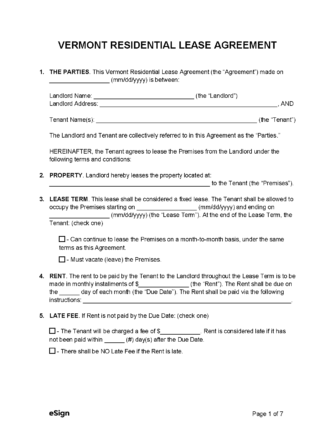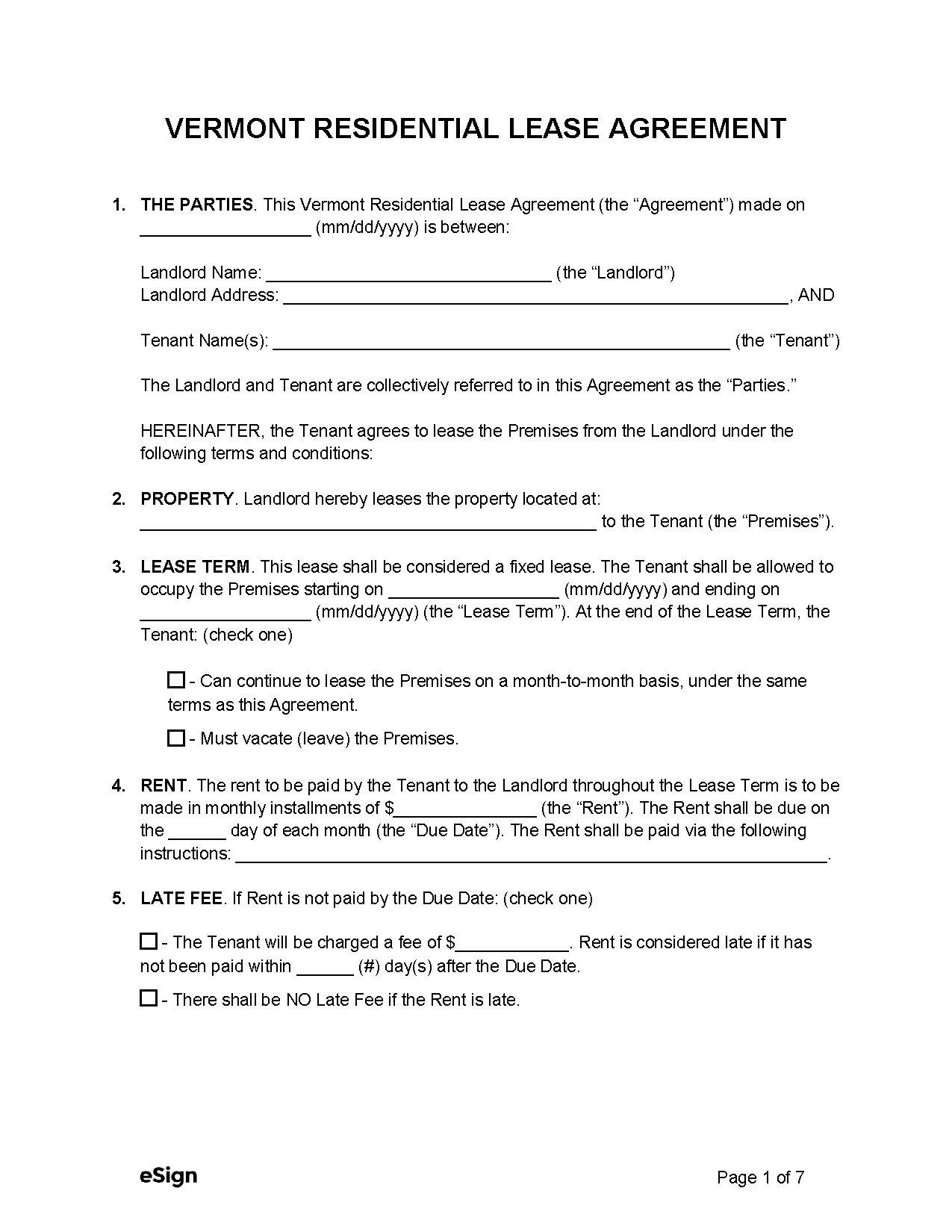Rental Application – Many landlords use this tenant screening document to ensure they find a good fit for tenancy.
Required Disclosures (1)
- Lead-Based Paint Disclosure (PDF) – Owners of property that might contain lead-based paint (i.e., built before 1978) must sign this disclosure with their tenant.[1]
Security Deposit Laws
- Maximum Amount ($) – No statutory limit.
- Returning to Tenant – 14 days.[2]
Rent Grace Period
No grace period provision exists in Vermont law.
Landlord Resources
- Residential Rental Agreements – Title 9, Chapter 137
- Handbooks (Guides):

